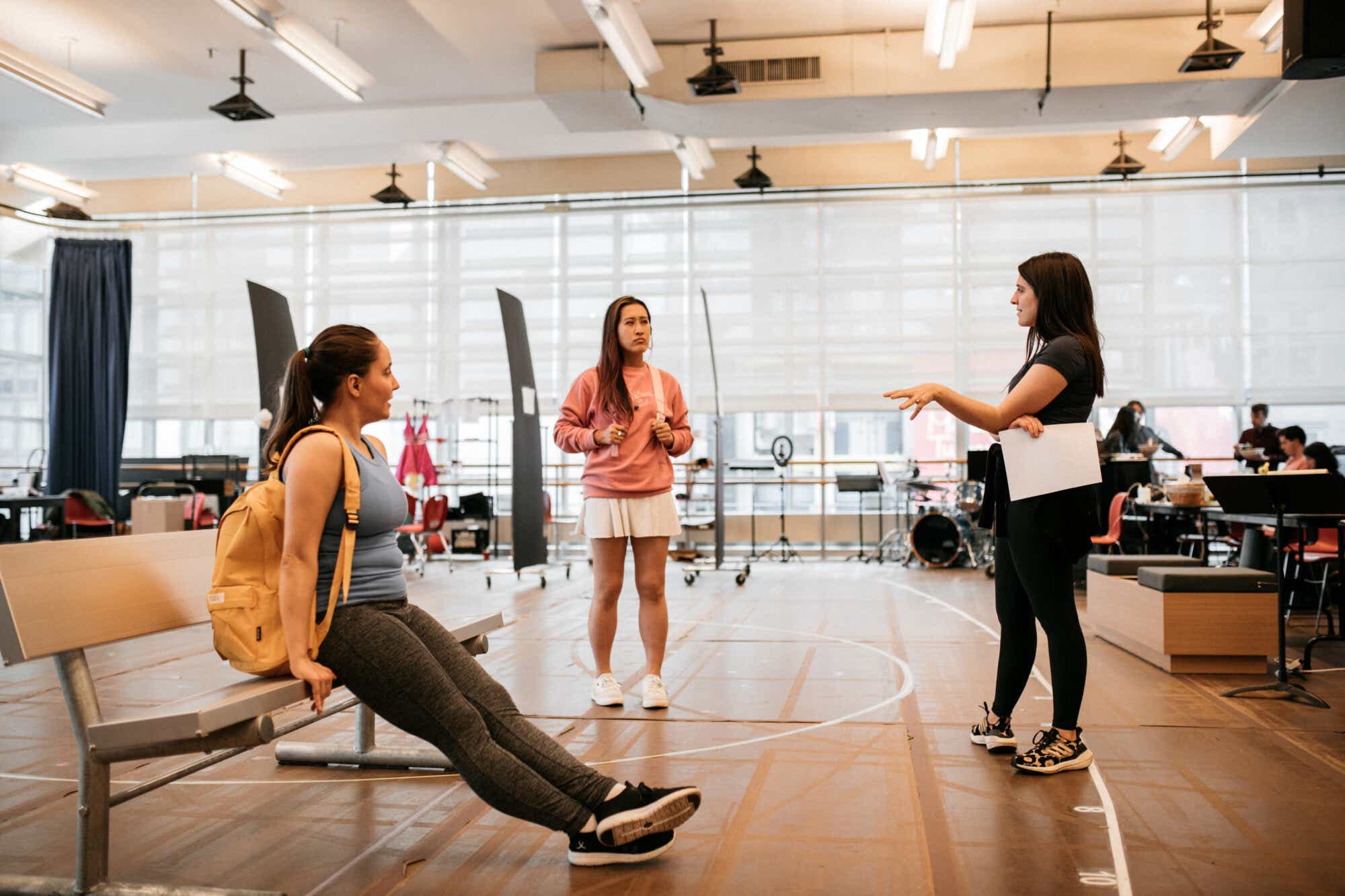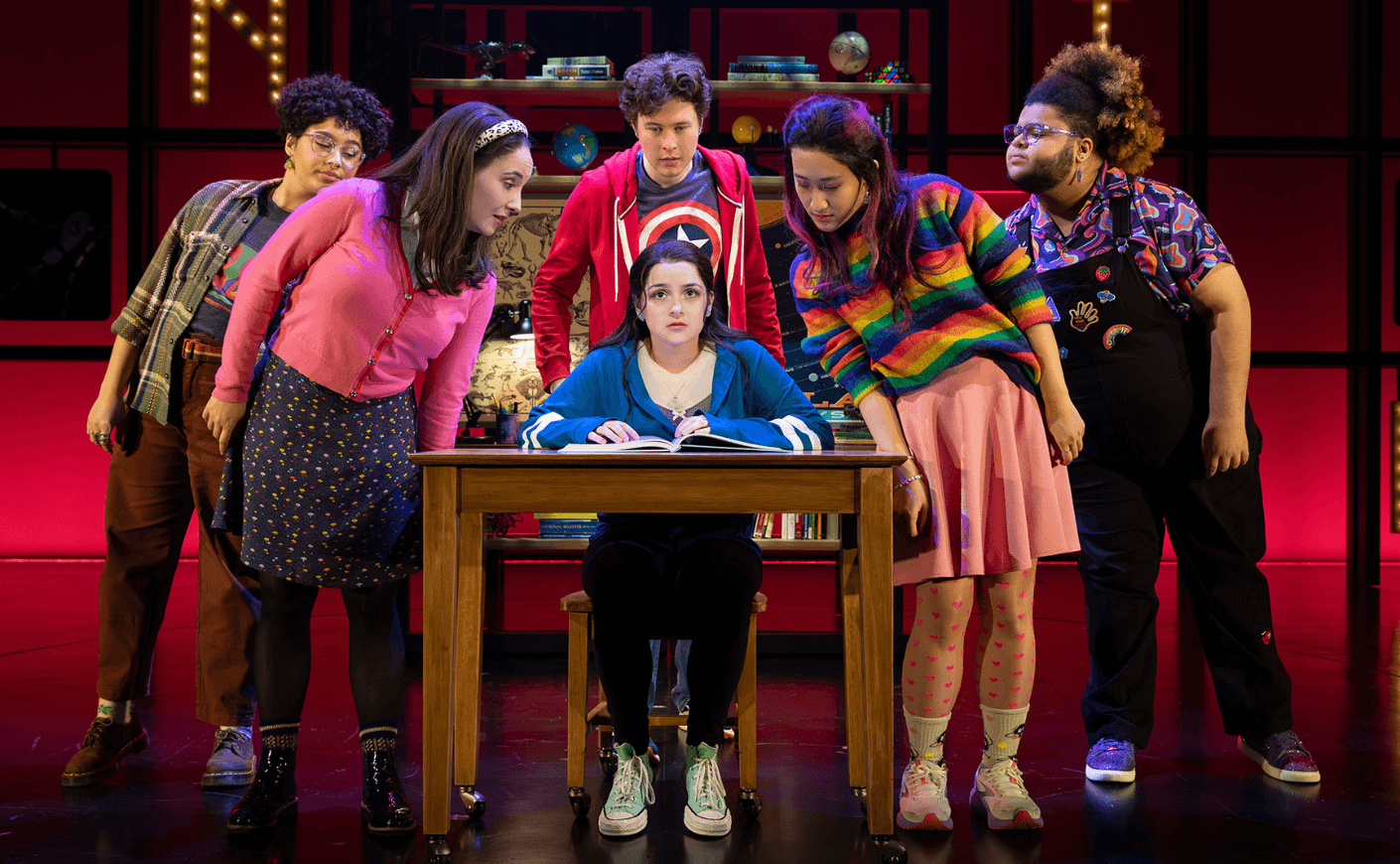More than 5.4 million Americans have been diagnosed as being on the autism spectrum, so the odds are pretty good that you know someone with the condition. That said, autism is still misunderstood by many, and manifests itself very differently from person to person. I was totally enthralled by a Broadway musical that aims to shed light on this disability, and break down barriers.
The musical How to Dance in Ohio, based off a documentary of the same name, invites audiences to embark on journey alongside a group of autistic kids preparing for a formal end-of-year dance. It celebrates diversity, but it doesn’t just talk the talk: All the autistic characters in the show are played by actors who are actually on the spectrum. (And the show’s producers even took great pains to make the viewing experience more comfortable for autistic audience members — more on that below.) If you’re in the NYC area, you’ve only got a few weeks to catch the show before it ends its run on February 11th, and I highly recommend you do! I spoke with the show’s director, Sammi Cannold, to learn more about this uplifting and illuminating production.
Sammi, this musical was a real breakthrough for people with autism. How did you get involved? I understand you had a very personal connection to the material.
Yes, so many of us working on the show have a personal connection. In my case, I got involved three and a half years ago, when Jacob Yandura, the show’s composer, reached out to me. He mentioned that he, his writing partner Rebekah, and producers Ben Holtzman and Sammy Lopez were adapting the documentary How to Dance in Ohio, which I had seen and loved. And they were looking for a director to pick up where their original director — the late, extraordinary legend Hal Prince — had left off. My brother is autistic, and I was very passionate about learning more about the subject matter and amplifying autistic stories, so I enthusiastically threw my hat in the ring and got the job.
How to Dance in Ohio was such a successful documentary. What were the challenges you faced when you decided to turn it into a musical?
I find that documentaries and musical theater often ascribe to different dramatic rules and structures. And in adapting something that’s based in reality, there’s a line you tow in terms of how much you want to deviate from what actually happened, for the purpose of dramatic effect. Ultimately, our writers chose to base the show on real people and a real story, like the documentary, but to add and adjust storylines and characters to optimize the story for the form of musical theater. Striking that balance was simultaneously challenging and rewarding.
All of the actors in the show have some form of autism. Was it daunting to cast? And why was that factor so important?
It was a no-brainer for me that we would cast autistic actors in the autistic roles in the show and that’s for a few reasons. First and foremost, authentic storytelling and the idea of “nothing about us without us” is ingrained in the mission and the message of the show. Second, so often autistic individuals are underestimated — that’s something I saw happen to my brother time and again, when he and I were growing up together — and I didn’t want to make any assumptions about what autistic actors could or couldn’t do. When we did a global casting search for autistic actors, the talent we saw was extraordinary. We could’ve cast the show three times over from that audition process alone, and I hope that creative teams will continue to cast authentically, particularly when it comes to stories that engage with disability.
Were there any specific challenges in directing the actors who were cast? (I thought they were all amazing by the way…)
I loved every minute of working with this company. With the guidance of our ASD Creative Consultant Ava and Director of Community Engagement Becky, we started off our rehearsal process with a survey that we utilized to get a sense of the needs and sensitivities of everyone in the room. We then took their answers to that survey to tailor a process to the individuals in the room. Every rehearsal process has its challenges and in this one, we were just very targeted in our approach to understanding what needs we might encounter and how we might address them. That approach turned out to work very well, in my opinion, and it’s something that I’ll now take into other rehearsal rooms, regardless of their make-up.
As you set out with the writers of the show, what were some of the important messages you were hoping to covey?
For neurotypical audience members, we wanted to foster an understanding of and opportunity to empathize and connect with autistic characters. For a community that’s so often misunderstood and that has so many assumptions made about it, we saw an opportunity to use the form of musical theater to create understanding and recognition. And of course, working with autistic collaborators — both on and offstage — was such a critical part of that. It goes back to the saying, “Nothing about us without us.”
In addition to that, one of the things that the writers and I love about the documentary is that it tells the story of many different autistic individuals, not just one. Autism means so many different things to so many different people, and in featuring the stories of seven autistic individuals who are very different from one another, we sought to teach our audience that “If you’ve met one autistic individual, you’ve met one autistic individual.”
What kind of feedback have you gotten from members of the autism community?
The feedback from autistic audience members has been tremendous, and we’re so grateful that the show has been so embraced and championed. The response I hear most frequently from autistic audience members is that they’re excited to see themselves and their experiences represented authentically on stage — that’s the dream review to me.

I know you took great pains to make sure everyone would be comfortable coming to see the play — can you describe the measures you took?
There are countless audience-facing measures that our team implemented to make the production as accessible as possible, for autistic audience members especially. For example, we have two cooldown spaces in the theater where audience members can go if they’re overwhelmed during the show, and there are television monitors playing the show-feed in those spaces — so that those individuals can continue watching the show, but in a more controlled environment. Another example is that we have sensory kits available to borrow that include fidget toys and sunglasses should the lights get too bright for individuals with light sensitivities. Those are just two of many measures and in this case, all the credit goes to our wonderful producers, general managers, company managers, access team, and others who made it all possible!
I know the show is closing February 11th, which must be heartbreaking for you and the whole company. What’s next for the show? And what’s next for you?
It is — it’s such a tricky financial moment for Broadway and new musicals in particular, but we’re all so grateful for the journey the show has had and will continue to have. Our fantastic producers are figuring out the next move — so many amazing fans are begging for a national tour and a London production, so I’m personally crossing my fingers on that. But regardless of what happens on those fronts, I’m very excited for the day when How to Dance in Ohio can be performed at schools and community theaters all around the world. I really look forward to seeing those productions.
As for me, I’m spending the year focusing largely on starting to work in film and television in addition to theater. I adore musicals and I’m also eager to expand my directorial toolbox so I can tell stories in many different forms. I’m attached to two feature films and a limited series and am working on a number of shorts, so that’s exciting and new.









